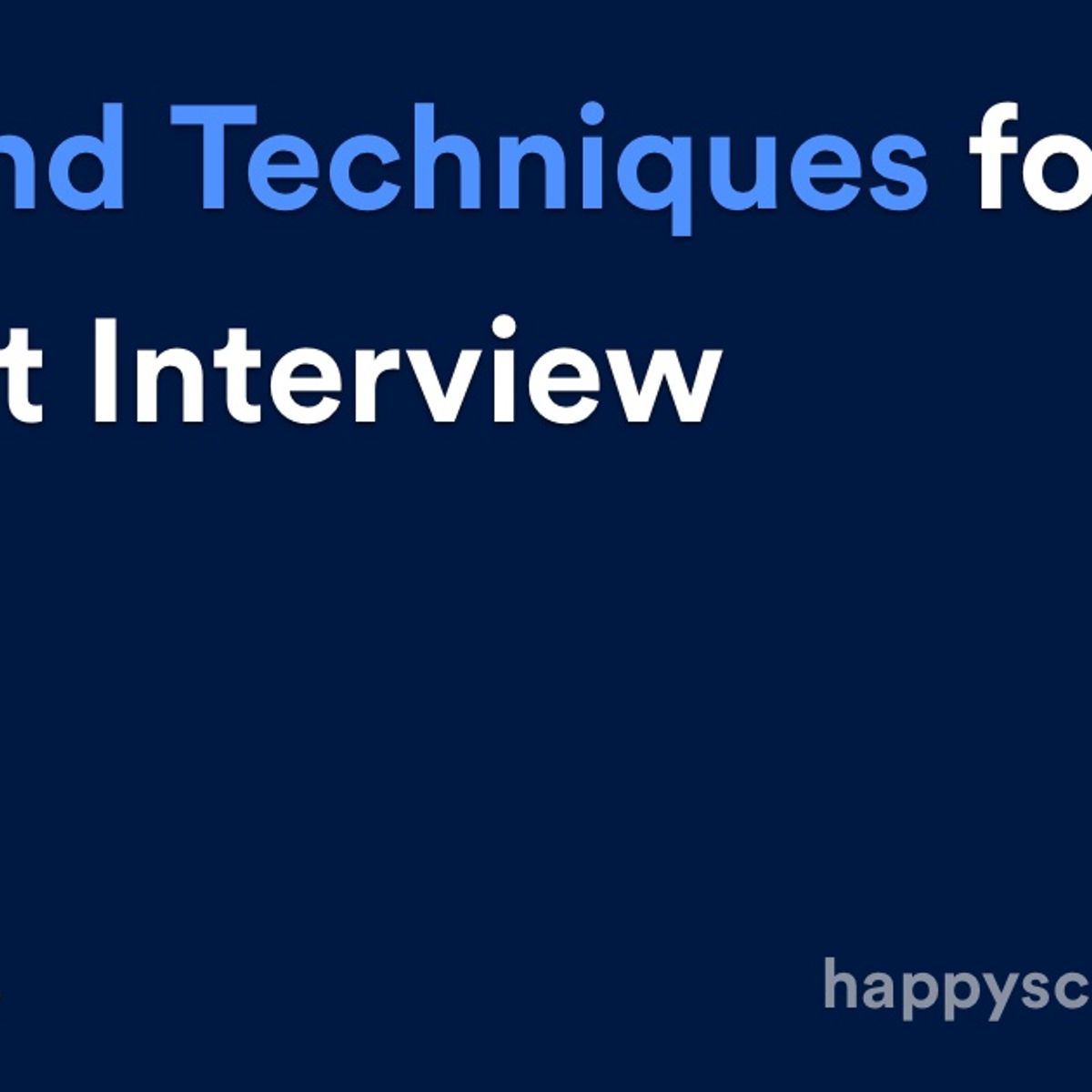Best transcription software for journalists

A great story often starts with what you manage to capture in an interview. It wasn’t long ago that journalists had to scrub through hours of audio themselves, but today’s transcription tools have taken on the grunt work.
Still, not every tool is built for the realities of a newsroom. You need something that can handle accents, crosstalk, tight deadlines, and sensitive material.
With so much riding on the quality of your transcription, choosing the right tool matters. That’s why I’ve reviewed the leading options and narrowed down the best transcription software for journalists.
TL;DR
- HappyScribe: Best for secure and accurate transcriptions for journalists
- GoTranscript: Best for human-verified accuracy
- Rev: Best for fast transcripts for broadcasts
- Trint: Best for live feed transcripts
- Otter: Best for mobile-based interviews
How to evaluate transcription tools as a journalist?
AI tools for journalists must have a specific set of features to help you.
1. Accuracy across real-world audio
Journalists often record interviews on the go. Look for tools that can handle background noise, overlapping speakers, fast talking, and regional accents without breaking the flow of your transcript.
2. Security and confidentiality
Interviews can involve sensitive or unpublished information. Make sure the transcription software offers encryption, access control, and GDPR and SOC 2 Type 2 compliance.
3. Speed and turnaround time
When you’re filing on a tight clock, you can’t wait an hour for a transcript. Prioritize tools that deliver fast automated transcripts and offer optional human-level accuracy when needed.
4. Editing, exporting, and collaboration features
A good transcript is just the start. Choose tools with timestamped editing, speaker labeling, search, highlights, and clean export options such as TXT, DOCX, SRT, and CSV. Bonus if it supports team collaboration or lets you share secure links with editors.
5. Support for multiple formats and long files
Your day at work includes voice memos, call recordings, video interviews, and large field files. The best AI tools for journalists are stable while processing lengthy recordings and accept all major audio and video formats without quality drops.
What are the best transcription tools for journalists?
Here's a rundown of leading transcription software for journalists and newsrooms:
| Category | HappyScribe | GoTranscript | Rev | Trint | Otter |
|---|---|---|---|---|---|
| Best for | Accurate, secure, multilingual transcription with collaboration | Human-grade accuracy and compliance-heavy work | Fast transcription for broadcast and live news | Multilingual AI transcription and team editing | Fast AI notes, summaries, and meeting transcription |
| Key features | AI + human 99% accuracy, collaboration workspace, timestamps, comments, API, rush options | Human accuracy, collaboration, search, + APIs | 99% human, ~96% AI, captions, live modules, AI insights | AI in 40+ languages, translation, Story Builder, live transcription | Live transcription, summaries, broad integrations, shared channels |
| Starting price | $12 per 60 mins pay-as-you-go; plans from $9/mo | AI from $0.02/min; human from $1.08/min | Basic free plan; Paid plan starts from $14.99/mo | $80/seat/month | Free; paid from $16.99/user/mo |
| Languages supported | 120+ | 140+ | English for human review; 37+ AI | 40+ | Mainly English (best on clean audio) |
| Security & privacy | GDPR, SOC 2 Type II, encryption at rest/in transit, SSO | GDPR, HIPAA, AES-256, NDAs, audits | SOC 2 Type II, HIPAA (enterprise), domain controls | ISO 27001, Cyber Essentials, AES-256, no external AI training | TLS/AES-256, enterprise admin controls |
1. HappyScribe
Best for: Journalists looking for fast and secure transcription services

HappyScribe soars to the top of recommendations because it was built with journalists in mind. The platform treats every file with the level of confidentiality your sources expect, while giving you a stable, quick workflow that keeps deadlines in check.
You get transcripts that hold up to newsroom scrutiny and make it easier to jump straight to the clips that shape your narrative.
Here are some ways journalists and newsrooms benefit from HappyScribe’s professional transcription services:
HappyScribe’s key features
Professional transcription with 99% accuracy
HappyScribe gives journalists the freedom to capture insights the way they want. Short on time? Get the AI to transcribe large audio files in seconds. Dealing with something technical? Ask for human-made transcription for 99% accuracy.
HappyScribe has a catalog of linguists who understand industry jargon and speaking nuances. They proofread your content, clean up formatting, and verify information to make transcripts newsroom-ready.
Over 600 journalists of Tamedia, the popular Swiss media company, use HappyScribe for professional interview transcription.
The quality is now very good with HappyScribe, so adoption happened organically — journalists recommended it to their colleagues, and now it’s a standard tool in the newsroom.
Security and privacy built for journalists
Investigative work often involves sensitive details and sources who trust you to protect their identity. HappyScribe is structured to keep that trust intact.
It uses encryption in transit and at rest, and GDPR and SOC 2 Type II compliance, so your files stay secure. While dealing with multiple stakeholders, the SSO login lets you control viewing and editing permissions.
Since nothing is shared without your approval, you can work under pressure and scrutiny.
Wide language support
If you're someone who works on global news or localization, you must have dealt with notes in multiple languages. HappyScribe automatically transcribes in 120 languages, allowing you to cover news across borders.
Before HappyScribe, Tamedia was struggling to transcribe Swiss German interviews, due to dialectic variations and phonetic complexities. But now, Tamedia not only gets accurate results but also saves time.
If you did a whole manual transcription, you needed between three and four hours to do it, and now it's done within a few minutes. So you save time, definitely. It would be ridiculous not to use this tool—just like not using a spellchecker.
Workspace collaboration and integration

News and media are rarely a one-person job. HappyScribe helps you work with teams without running into chaos.
You can create secure links to invite teammates and clients, track access history, collaborate in the editor, add timestamps, review comments, and so much more.
Trying to be more productive? Simply add the HappyScribe API with Zapier to automate your transcription projects.
Value-added services for newsrooms
One of the reasons why journalists and media houses stick to HappyScribe is the quality of life features that make the experience more convenient.
Features like online voice recorder, rush transcriptions for urgent tasks, verbatim transcriptions, custom glossaries and style guides for brand consistency, and volume-based pricing for large projects make the partnership worthwhile. At least that's how Sterling Associates feels about HappyScribe's impact on the company.
We’ve phased out our internal transcription program. Our associates just naturally stopped using it. So currently HappyScribe receives 100% of our files, which is great.

- Starter: Pay-as-you-go; starts at $12/60 minutes
- Lite: $9/month
- Pro: $29/month
- Business: $89/month
Pros
- Wide language support and 99% human-backed accuracy
- Easy collaboration tools for newsroom teams
- GDPR and SOC 2 Type II compliance, encryption and SSO support for security and privacy
- Ask AI features to find insights and one-click drafts from transcriptions
- Wide format support: SRT, DOCX, PDF, VTT, CSV, MP3, MP4, FLAC, WAV, WMV, FLV, MPEG, etc.
- Intuitive UI for new and experienced journalists to start working
Cons
- Primarily web-based, with a lack of mobile app support
How to use HappyScribe for transcription as a journalist: A step-by-step guide
1. Upload your recording
Drop your file straight from your laptop or pull it in from Google Drive, YouTube, or Dropbox. The first 10 minutes are on us, and you can upload as many files as you need.
2. Pick the language
HappyScribe recognises more than 120 languages, dialects, and accents, so your transcript starts on the right foot.
3. Choose how you want it transcribed
Go for the machine-generated option if you need something fast, or pick the human-made service for expert-level accuracy delivered by a native transcriber.
4. Get your transcript
Automatic transcripts appear within minutes. Human-made transcripts arrive within 24 hours, fully proofread and polished.
5. Export in the format you prefer
Download your transcript as TXT, DOCX, PDF, HTML, and several other formats.
2. GoTranscript
Best for: Human-verified accuracy for interviews

GoTranscript is an enterprise-focused transcription service built for teams that can’t afford errors. Its global network of professional transcribers covers 140+ languages and delivers high accuracy, even with difficult audio.
In practice, GoTranscript is a dependable option for investigative work, multilingual reporting, and any assignment where precision and compliance matter.
GoTranscript’s key features
- Reliable human transcription accuracy with double-pass QA
- GDPR and HIPAA-grade security, AES-256 encryption, NDAs, and audits
- 140+ languages with native subtitling and SDH/FCC compliance
- Workspace collaboration, granular search, and annotations, along with transcription and proofreading APIs
GoTranscript’s pricing
- AI transcription: Starts from $0.20/min (pay as you go)
- AI transcription: Starts from $0.02/min (subscription)
- Human transcription: Starts from $1.08/min for English
Pros
- High accuracy on difficult audio and accents
- Strong compliance features for sensitive and regulated reporting
- Broad language coverage for global newsrooms
Cons
- Automated transcripts are noticeably weaker on complex audio
- Rush pricing might become expensive
Read more: 5 Best Professional Subtitling Services
3. Rev
Best for: Journalists who need fast transcriptions for live news

Rev is a popular transcription tool, and it works fairly well for journalists. It fits into fast-moving editorial workflows, offering quick delivery, clean collaboration tools, and newsroom-grade human transcriptions.
Security is a major draw as well. Rev maintains SOC 2 compliance and offers HIPAA on request for Enterprise users. For reporters dealing with live interviews in English and fast turnarounds, Rev could be an option.
Rev’s key features
- Human and AI transcription with 99%+ and ~96% accuracy
- Broadcast-ready captioning with FCC/ADA compliance and live modules
- SOC 2 Type II security, HIPAA on request, SSO, and domain controls
- AI productivity tools for search, multi-file insights, summaries, and real-time editing
Rev’s pricing
- Free
- Basic: $14.99/month/user
- Pro: $34.99/month/user
- Pay-per-minute: $1.99 (human transcription) or $0.25 (AI transcription)
Pros
- High human accuracy with fast turnaround
- Smooth, time-saving interface and workflow
- Reliable integrations and responsive support
- Powerful mobile app
Cons
- Human transcription supports only English language
- Rev perpetually but anonymously uses user data for in-house AI model training
Read more: HappyScribe vs Rev
4. Trint
Best for: Newsrooms that need multilingual AI transcription with strong collaborations

Trint’s transcription services are built around journalists, media teams, and content creators. It turns video and audio to text in 40+ languages, then lets reporters and editors jump into shared workspaces to clean up transcripts, mark quotes, and build stories together.
Trint's security features are solid, and it supports live transcription feed sharing with teammates.
Trint’s key features
- Multilingual AI transcription in 40+ languages with translation to 50+ languages
- Real-time collaboration, shared editing, Story Builder, and soundbite tagging
- ISO 27001 and Cyber Essentials certification, AES-256 encryption, granular access control
- Live transcription and integrations with ENPS, Mimir, LiveU, Octopus, and API access for enterprise users
Trint’s pricing
- Starter: $80/seat/month
- Advanced: $100/seat/month
- Enterprise: Custom pricing
Pros
- Fast, multilingual transcription for global media projects
- Strong collaborative editing and permission controls
- Solid privacy standards and ISO-certified security
Cons
- No human transcription option for compliance-heavy work
- Seat-based pricing can get expensive for larger teams
Read more:HappyScribe vs Trint
5. Otter
Best for: Journalists who conduct fast, on-the-go interviews

You might have come across Otter already, as it's one of the most popular transcription tools. While it's great for personal projects and one-off recordings, journalists can enjoy features like automatic summaries and quick highlights across desktop, mobile, and the web.
For reporters on the go, Otter lets them capture interviews, press briefings, and virtual calls without juggling manual notes.
Otter’s key features
- Real-time transcription with summaries, action items, and searchable highlights
- AI media agent for extracting quotes, structuring story outlines, and organizing interviews
- Integrations with popular apps like Zoom, Google Meet, Teams, Slack, Notion, Salesforce, Dropbox, and Zapier
- Collaboration tools include shared channels, editing, annotations, and insight dashboards
Otter’spricing
- Basic: Free
- Pro: $16.99/user/month
- Business: $30/user/month
- Enterprise: Custom pricing
Pros
- Quick and reliable transcription for clean audio
- Easy-to-use mobile apps, wide integrations, and collaborative workflows
- Instant summaries and highlights boost reporting speed
Cons
- Speaker identification can be inconsistent in group interviews
- You might face occasional billing and support issues
Read more:HappyScribe vs Otter AI
Pick the right transcription software for journalists
Choosing the right transcription tool depends on the type of journalism you do.
If your work leans heavily on human-verified accuracy with strict compliance, GoTranscript is built for that world.
Rev suits fast-moving broadcast environments where English-only workflows matter.
Trint shines when multilingual teams need collaborative editing for global stories.
Otter is strong for notes, calls, clean audio, and AI summaries, especially if you move between meetings and interviews all day.
HappyScribe brings the most balanced setup for journalists who need accuracy, security, speed, and collaboration without juggling multiple tools. You get reliable AI, human verification when needed, multilingual coverage, affordable pricing, and compliance that satisfies sensitive reporting.
If you want transcripts you can trust and tools that help you work faster without compromising quality, HappyScribe is the safest place to start.
Frequently Asked Questions
What is the best transcription tool for journalists?
The best transcription tool for journalists is usually the one that balances accuracy, speed, and security. HappyScribe is a strong choice because it handles long audio, background noises, multiple speakers, and transcript editing with interactive timestamps. It also offers both AI transcription software and human review for newsroom-ready accuracy.
Which transcript service is best?
For most reporting workflows, HappyScribe and GoTranscript lead the pack. HappyScribe is ideal for fast AI transcription and multilingual work, while GoTranscript is better for fully human, compliance-heavy projects. Both handle long files and deliver cleaner results than basic speech recognition tools.
Which transcription site is best?
If you want a site that supports large uploads, clean editing, and collaboration, HappyScribe is one of the most reliable. It outperforms standard notetaking apps and browser tools like Google Docs voice typing because it manages tough audio conditions and offers proper file processing for interviews, podcasts, and field recordings.
Is Rev or TranscribeMe better?
Rev is better for fast human transcription and broadcast-level captions. TranscribeMe is cheaper but focuses more on smaller tasks and micro-jobs. For journalists needing consistent accuracy, Rev usually performs better, though it still can’t match HappyScribe’s mix of speed, multilingual support, and newsroom-friendly workflow.
What’s the fastest way to turn audio notes into text?
Use an AI transcription software that supports real-time speech recognition and quick transcript editing. Tools like HappyScribe or Otter can convert audio notes in minutes, and features like meeting summaries help you extract key points instantly.
How many transcription minutes do journalists typically need?
Most journalists use 300-1,000 transcription minutes per month, depending on interview volume. If you process long audio or record frequent press calls, choose a speech-to-text tool with flexible monthly limits and bulk pricing.
Can journalists use ChatGPT to transcribe interviews?
ChatGPT’s record mode can transcribe and summarize shorter audio clips like meetings, brainstorms, or voice notes. It works well for quick captures, but it still isn’t ideal for long, high-stakes interviews where accuracy and confidentiality matter. Sensitive information may be at risk and they could be used for training AI models. Dedicated journalism-friendly transcription tools like HappyScribe, Trint, or Rev are more reliable and secure alternatives.

Rodoshi
Rodoshi helps SaaS brands grow with content that clicks, converts, and climbs across SERPs and LLMs. She spends her days testing tools, decoding tech, and turning insights into interesting narratives. Off the clock, she trades dashboards for detective novels and garden therapy.


